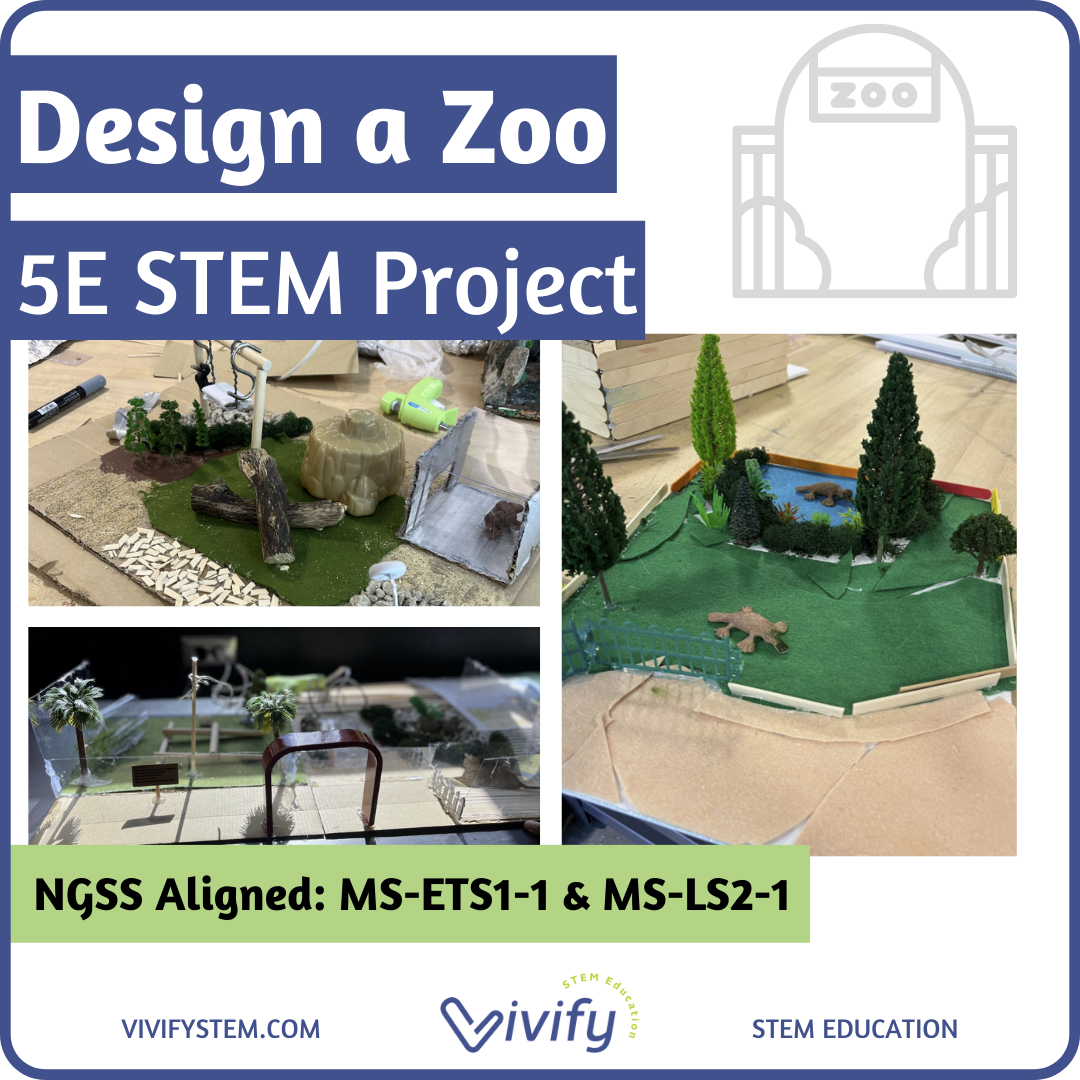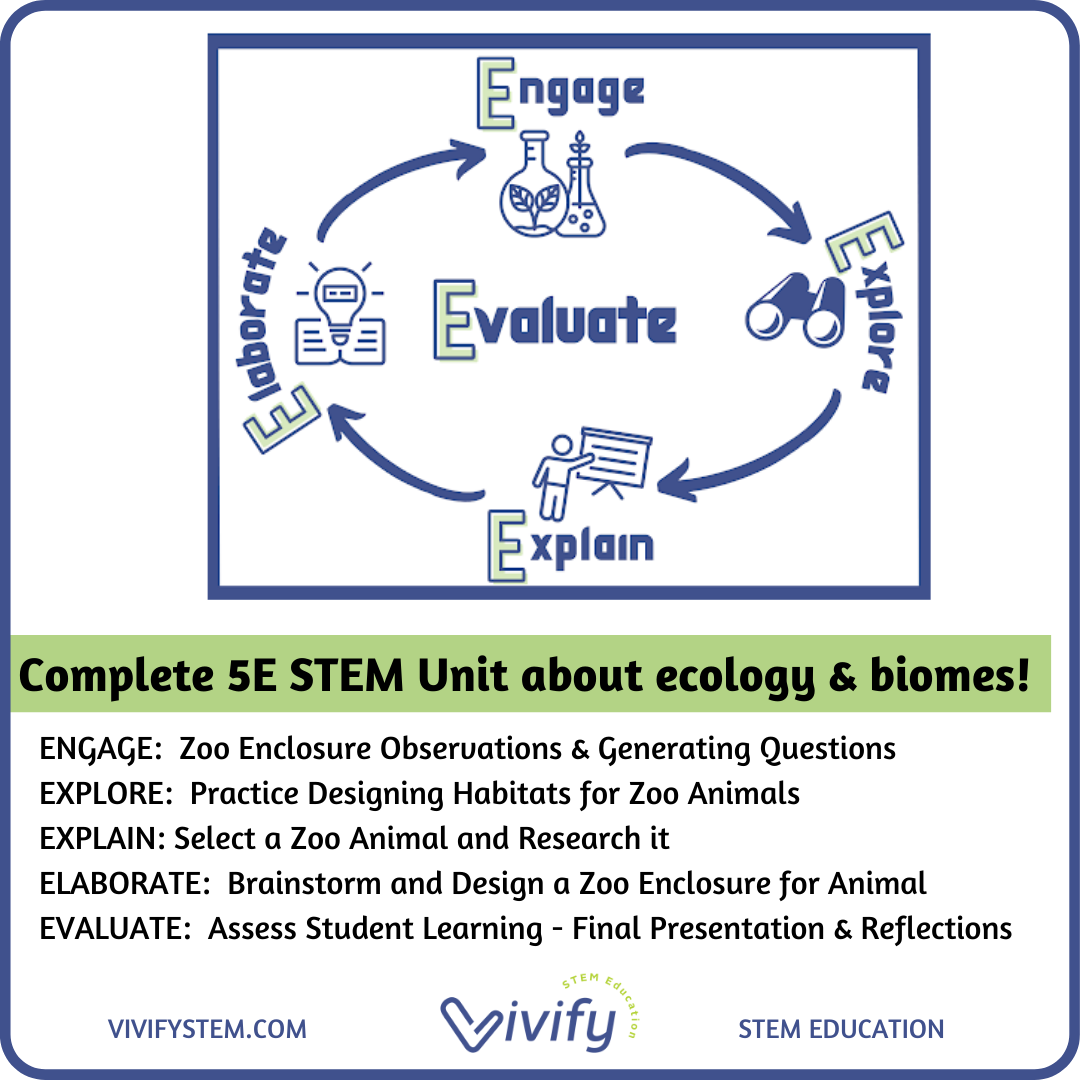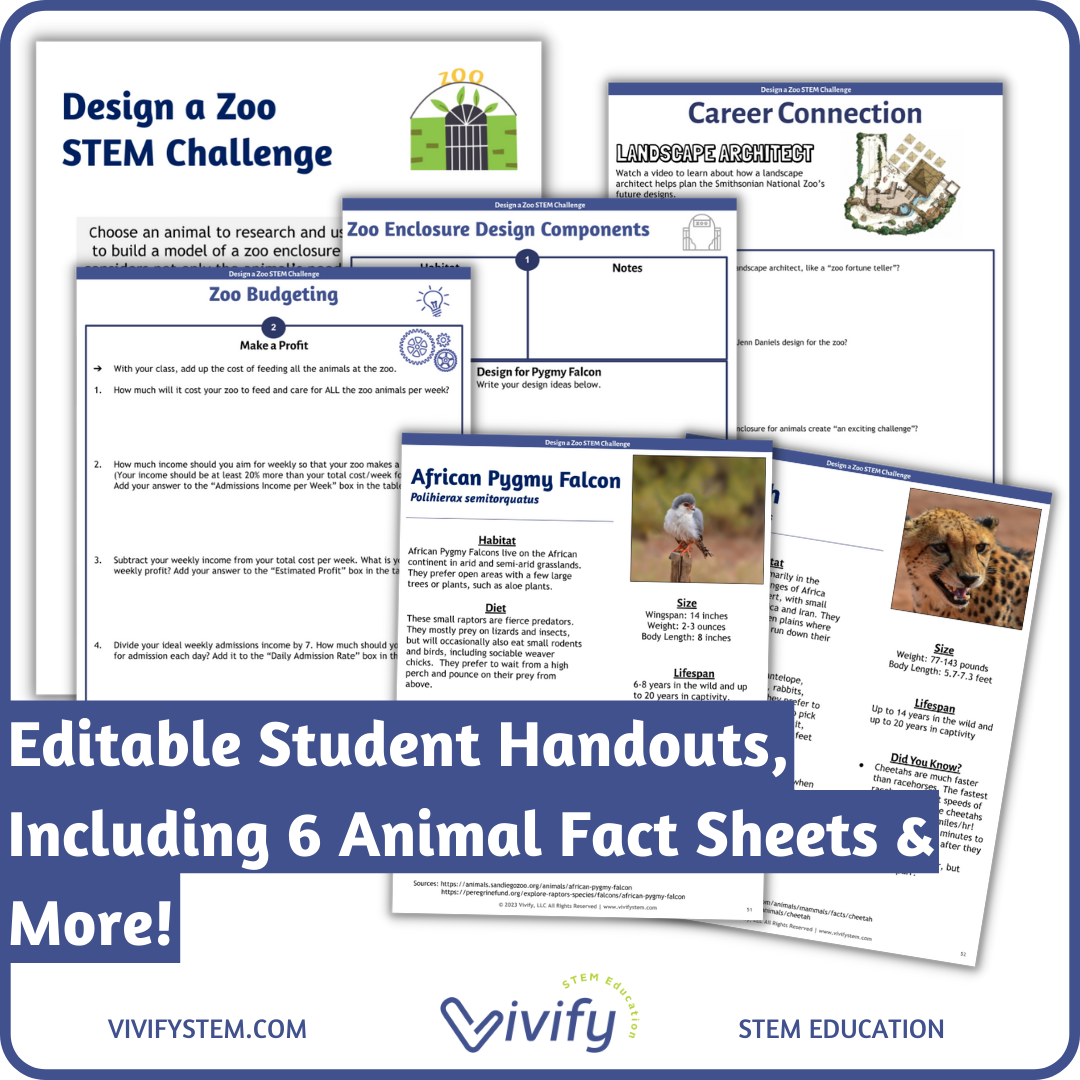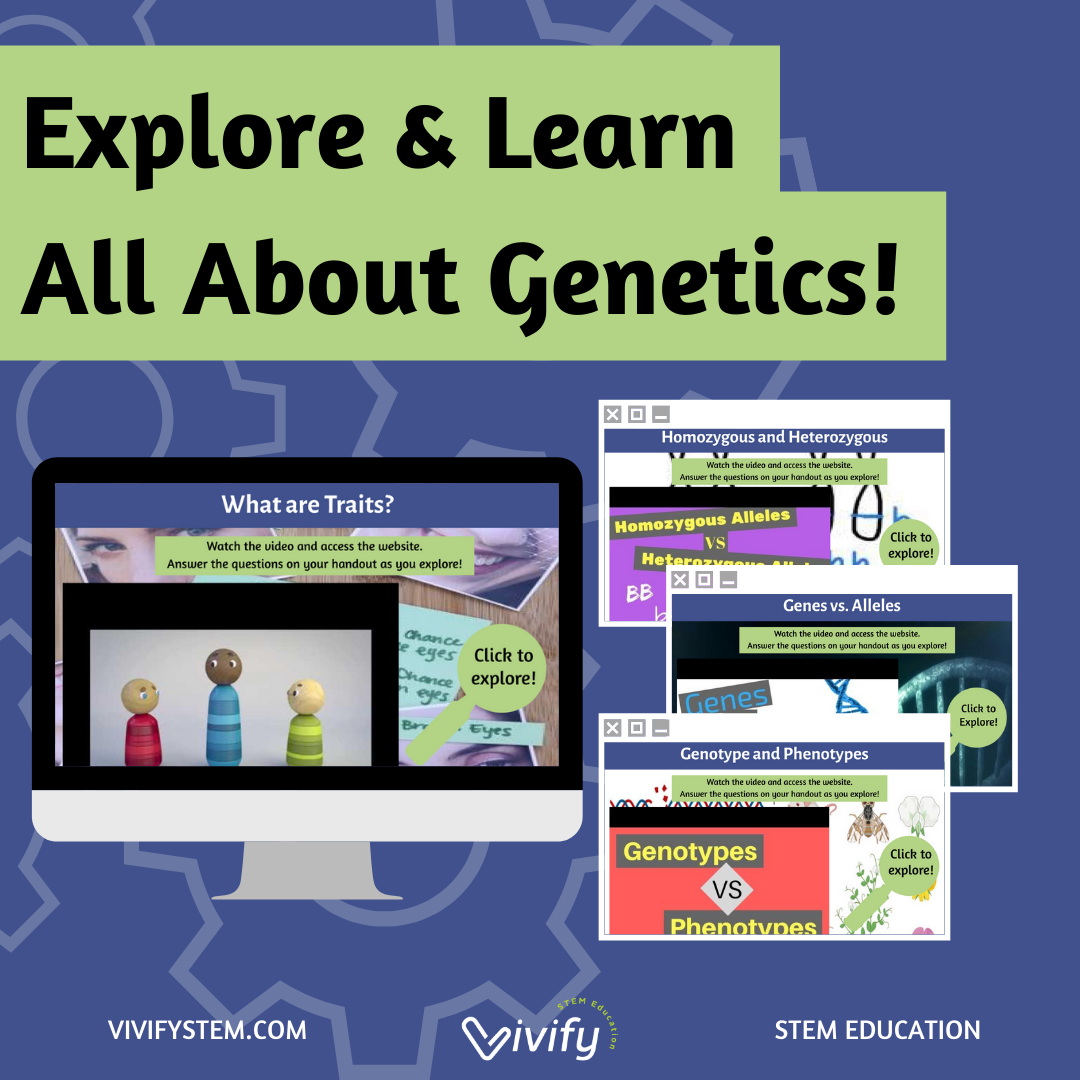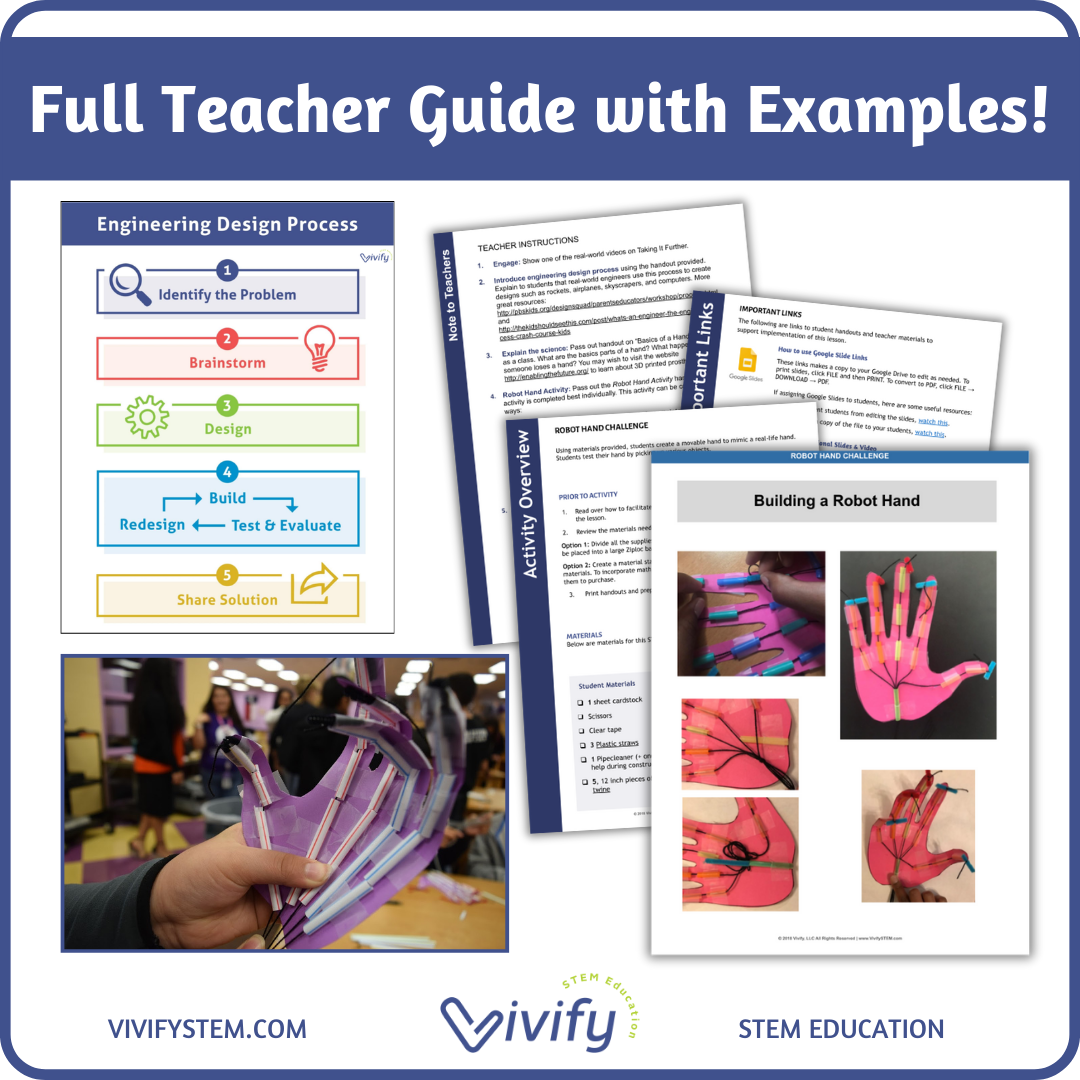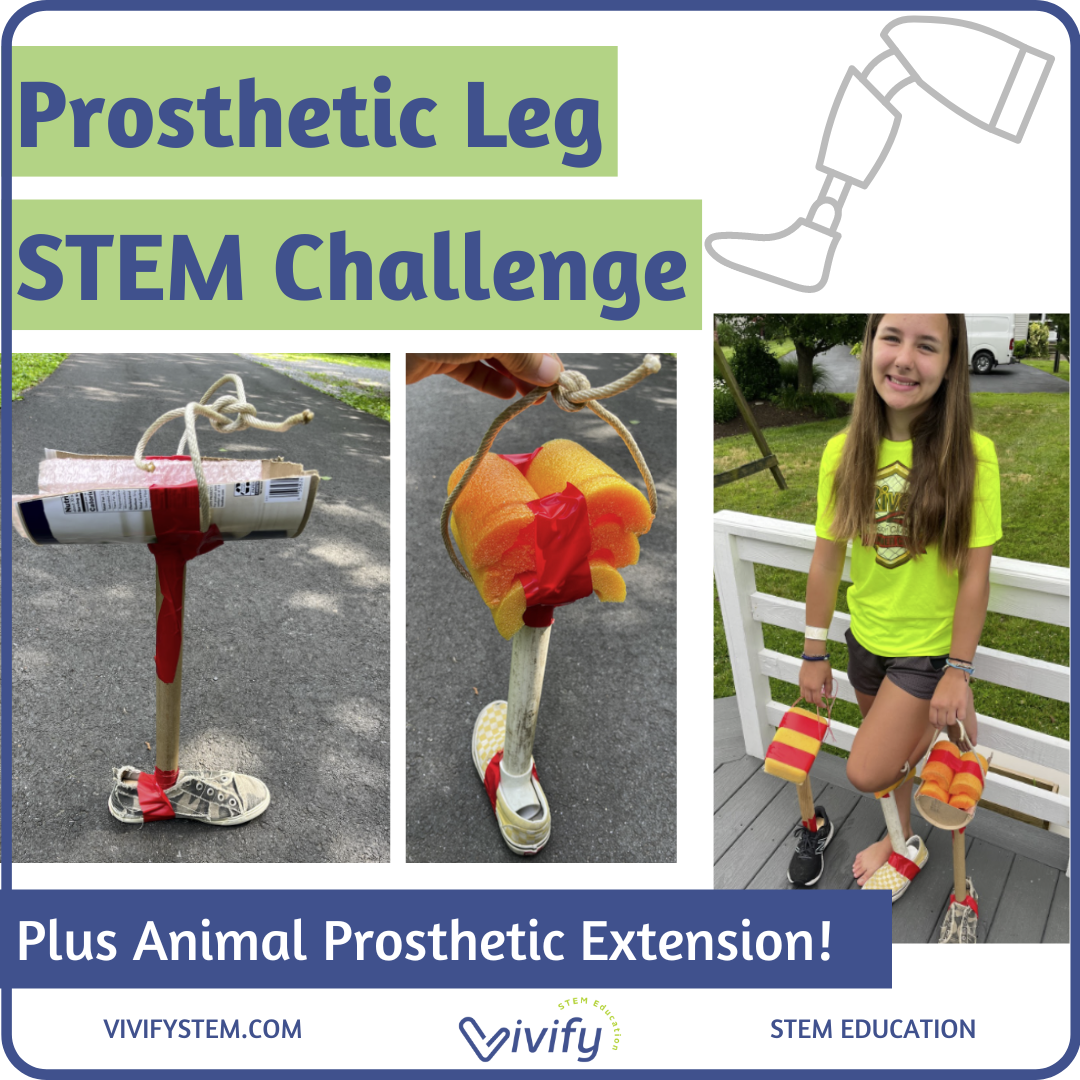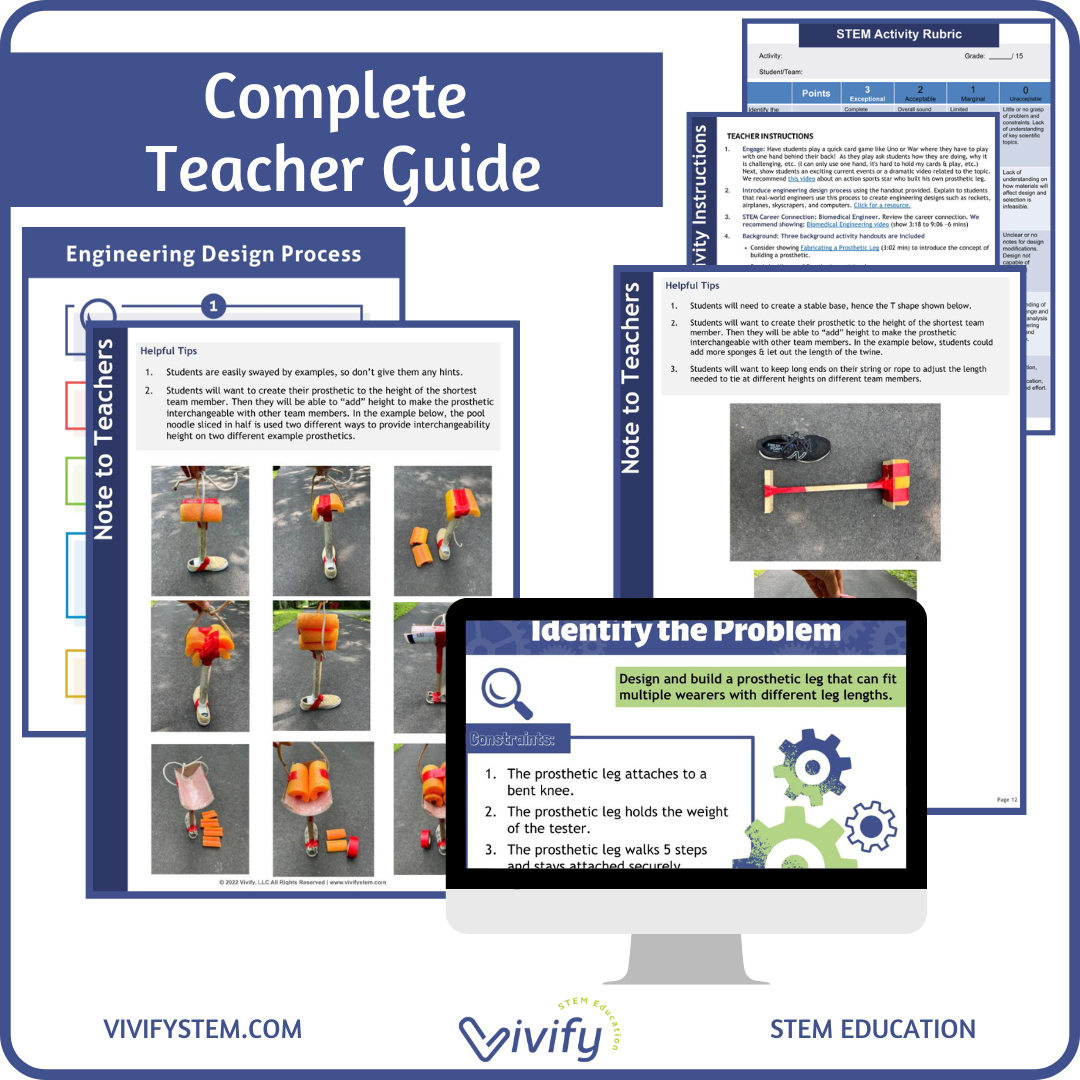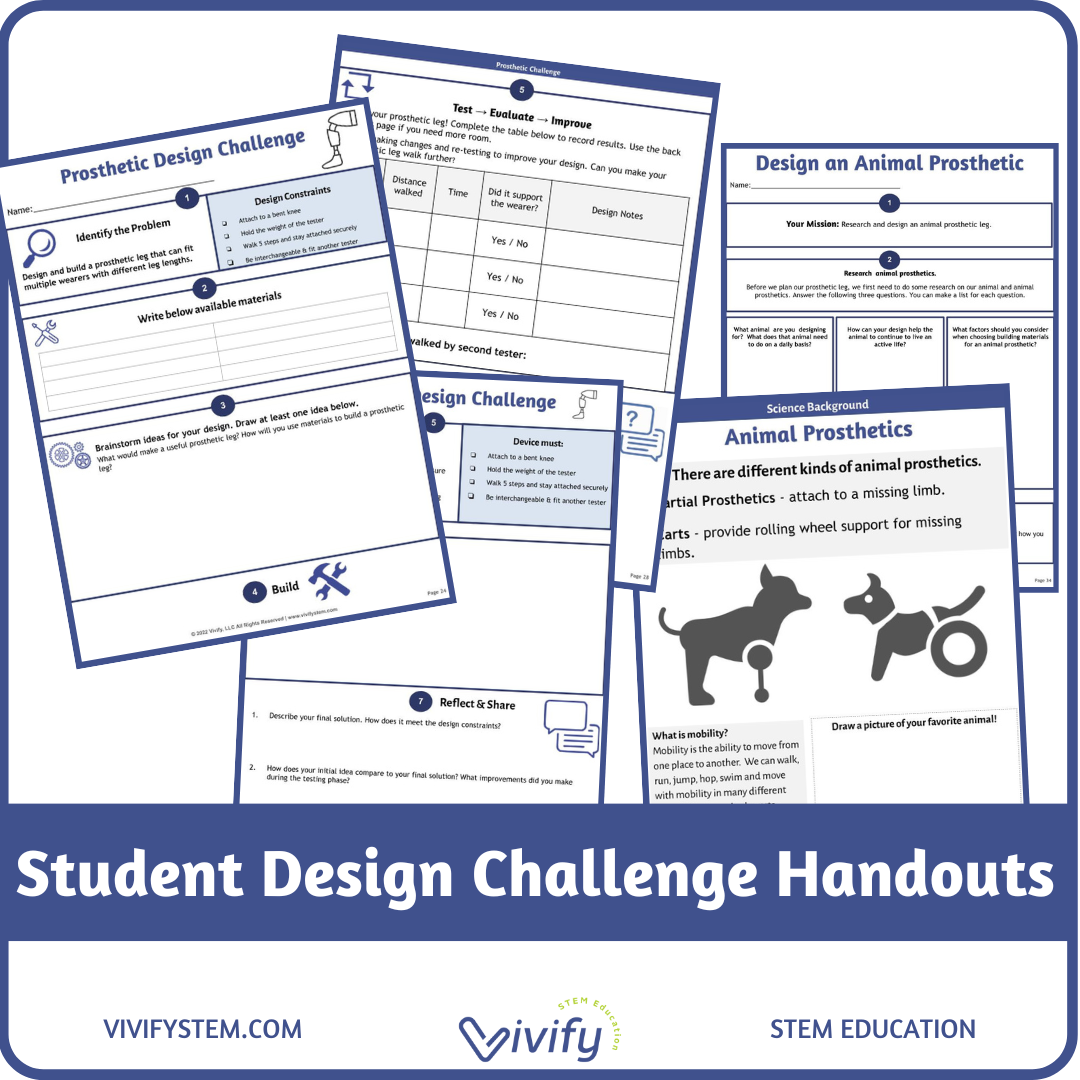Design a Zoo! 5E STEM Project Activity Overview
This life science STEM research and design project covers topics related to ecology and biomes. The unit is intended for upper elementary or middle school (4th - 6th grade) and covers science concepts and engineering design with a research component.
Your Mission: Your class has been asked to help the local zoo redesign its animal enclosures. The zoo wants to create new habitats that are perfect for the animals and enjoyable for visitors. To start, you'll need to research what animals need to thrive in a zoo enclosure. After that, you'll pick one animal to focus on and use the design process to create a model of a zoo enclosure that takes into account both the animal's needs and the needs of the zoo visitors.
5E Learning Cycle + Project-based learning
Real-world connections
Discuss how habitat, feeding, enrichment and visitor experience all contribute to zoo enclosure design and more!
Full Teacher's Guide, including editable Teacher Slides and Student handouts!
5E Learning Cycle Science Unit Includes:
Engage: Zoo Enclosure Observations & Generating Questions
Explore: Practice Designing Habitats for Zoo Animals
Explain: Select a Zoo Animal and Research it
Elaborate: Brainstorm and Design a Zoo Enclosure for an Animal
Evaluate: Assess Student Learning with Final Presentation and Reflections
Zoo Habitat STEM Lesson Includes:
Teacher guide with detailed instructions, links to resources, and photos of example student projects
Editable Teacher Instruction Slides
Editable Student Handouts including 6 animal fact sheets, habitat cards, and a list of animals to research
Engineering Design Process poster
Editable Rubric
NGSS Standards Alignment
MS-ETS1-1: Define the criteria and constraints of a design problem with sufficient precision to ensure a successful solution, taking into account relevant scientific principles and potential impacts on people and the natural environment that may limit possible solutions.
MS-LS2-1: Analyze and interpret data to provide evidence for the effects of resource availability on organisms and populations of organisms in an ecosystem.
MS-LS2-5: Evaluate competing design solutions for maintaining biodiversity and ecosystem services.
5-LS2-1: Develop a model to describe the movement of matter among plants, animals, decomposers, and the environment.
3-5-ETS-1-2: Generate and compare multiple possible solutions to a problem based on how well each is likely to meet the criteria and constraints of the problem.

